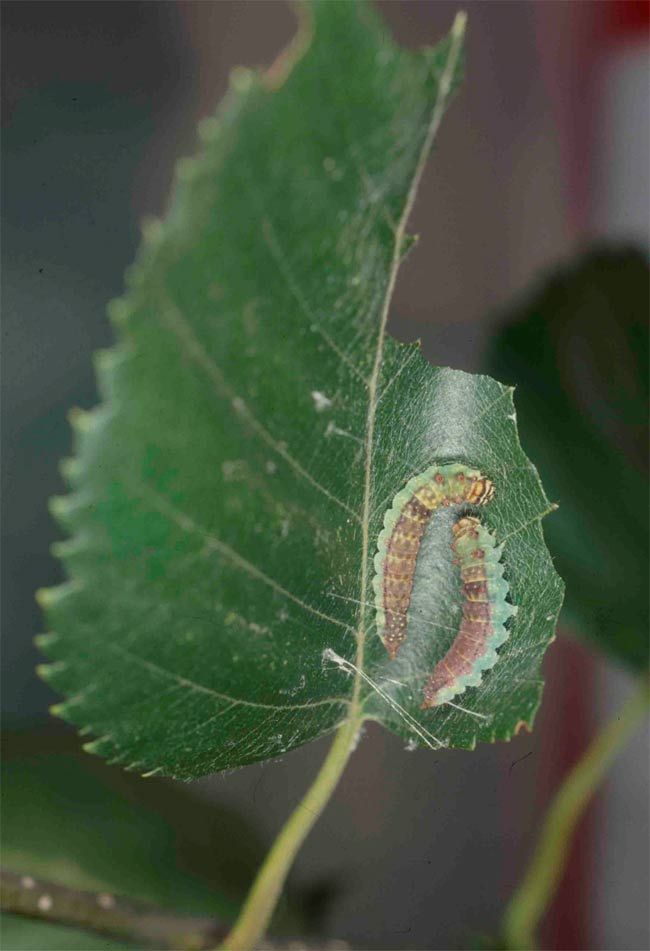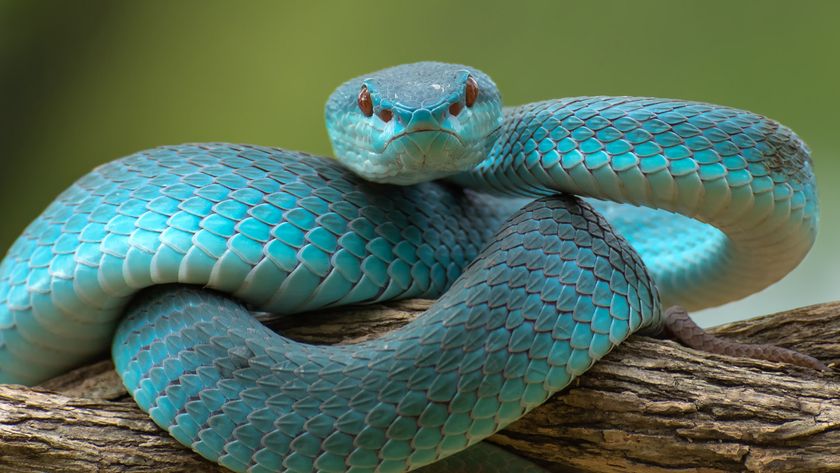Civilized Caterpillars Talk With Their Butts

Some caterpillars essentially talk with their rear ends, scraping oar-like structures on leaf surfaces to signal turf ownership to intruders. Now researchers have found the butt-talking evolved from crawling behaviors.
Scientists have long studied how animal communication came about.
"Many communication signals, if they're very advanced, they may have evolved from a previous form, but ultimately a communication signal starts from scratch, from a non-signaling behavior," said study researcher Jayne Yack of Carleton University in Ontario, Canada.
Caterpillars, which are the larvae of various butterflies and moths, often build silken shelters on leaves. To defend their territory and keep out intruders, the larvae can wear one of at least two hats: tough-guy bully or sophisticated orator.
The former lets an intruder know who's boss with aggressive maneuvering, crawling up to the enemy, pushing and biting to try to evict it from a leaf. The civilized talker instead scrapes its rear on the leaf, sending out vibration signals saying the equivalent of "You better leave now, or else." These more posh caterpillars also use their mouth parts to drum on the leaf and scrape across the leaf's surface.
But why?
The researchers wanted to find out how the more sophisticated talking came about.
Sign up for the Live Science daily newsletter now
Get the world’s most fascinating discoveries delivered straight to your inbox.
They studied the turf-defending behaviors and the rear-end shapes of more than 10 Drepanidae species and a few other caterpillar species, such as Tethea or. They found the larvae with oar-like structures on their anal segments used scraping and drumming signals to communicate ownership of territory. Those caterpillars with a so-called pro-leg at the rear (no oars) used physical aggression to make their case to intruders.
The team also analyzed the caterpillars' DNA to configure a family tree of sorts, showing where in evolutionary time the species likely showed up. Turned out, there was a link between communication type and where each animal fit on the tree.
"The ones that are evolutionarily older, the more ancestral representatives, don't anal scrape at all. When an intruder is coming onto their leaf, they walk toward them and push them and bite them," Yack told LiveScience. "The more evolutionarily younger ones, they don't bite, they're not physically aggressive. All they do is walk on the spot and make these signals to say to the intruder 'I'm here, get out.'"
The three vibration signals are used in various combinations to let the intruder know the caterpillar is "getting madder," she said. "The signals escalate depending on how close the intruder is coming."
How it evolved
Their observations showed the anal segments get retracted in the same way to scrape the anal oars on the leaf surface for species such as Drepana arcuata and similar species, and to carry the anal pro-leg forward when crawling in T. or and similar species.
"We conclude that the anal scraping movement is a modified component of crawling, and that instead of moving forward, D. arcuata walks on the spot, to talk," lead author Jaclyn Scott of Carleton University and colleagues write in the April 12 issue of the journal Nature Communications.
But while a large dog might have the goods to back up a teeth-bearing growl, caterpillars don't. Instead, Yack speculates the territorial signals might be letting the intruder know the resident is ready to spend a long time fighting or just "arguing," and so the intruder might as well not waste its time.
Another idea is that the vibrations from the scraping and drumming are so loud they attract birds on the hunt for meaty insects. And the resident has a little silken shelter and might be telling the intruder, "I'm making a racket here so if you want to take cover you better take off," Yack said.
The researchers are also looking at a few possible intermediate caterpillars, which lack both the anal oars and the pro-legs. One such species just swishes its rear end back and forth, as if trying to hit the intruder. These species could give insight into a step along the way from bully to civilized talker.
- Watch the Caterpillars Communicate
- 10 Things You Didn't Know about Animals
- 10 Animals That Use Tools
Jeanna Bryner is managing editor of Scientific American. Previously she was editor in chief of Live Science and, prior to that, an editor at Scholastic's Science World magazine. Bryner has an English degree from Salisbury University, a master's degree in biogeochemistry and environmental sciences from the University of Maryland and a graduate science journalism degree from New York University. She has worked as a biologist in Florida, where she monitored wetlands and did field surveys for endangered species, including the gorgeous Florida Scrub Jay. She also received an ocean sciences journalism fellowship from the Woods Hole Oceanographic Institution. She is a firm believer that science is for everyone and that just about everything can be viewed through the lens of science.













